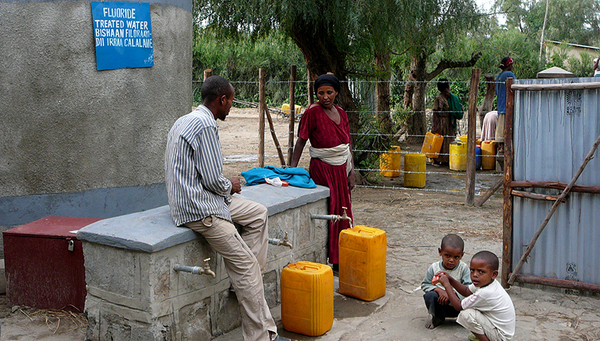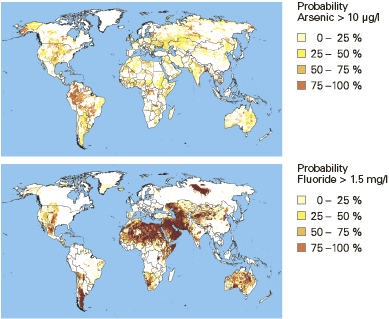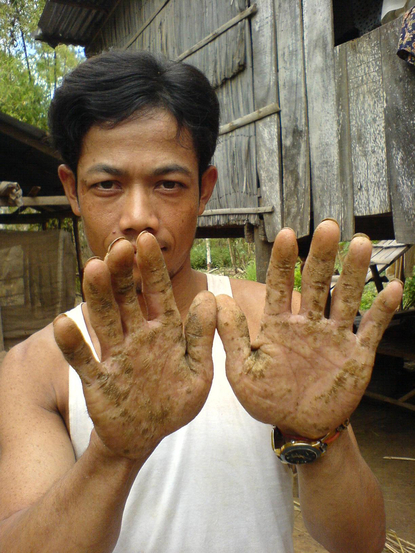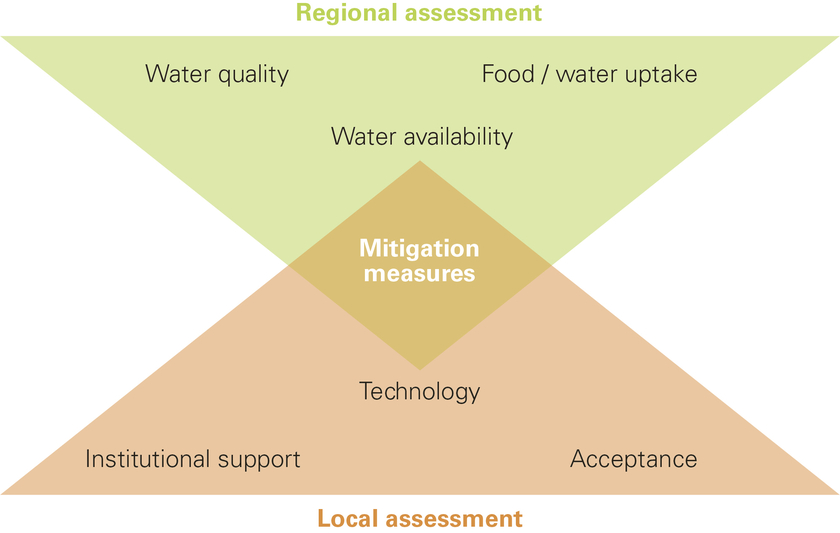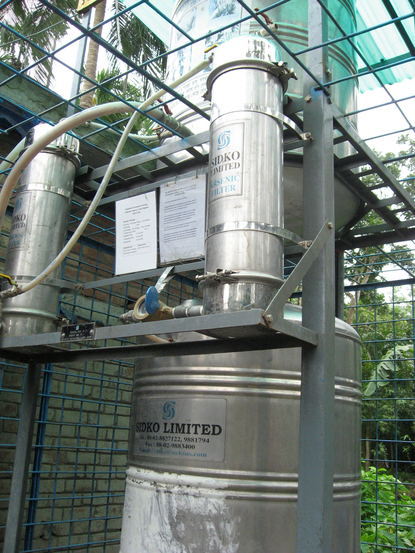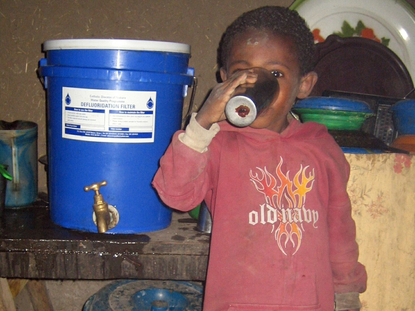News Detail
Tackling arsenic and fluoride in drinking water
March 18, 2015 |
An estimated 300 million people worldwide use drinking water contaminated with arsenic or fluoride. These trace elements are natural (geogenic) contaminants, leached into groundwater from rocks and sediments. Depending on the geological conditions, they may occur in concentrations which pose a risk to human health. The guideline values specified by the World Health Organization are 10 micrograms per litre for arsenic and 1.5 micrograms per litre for fluoride. Elevated concentrations are found in particular in parts of Asia, Africa and South America (Fig. 2). The problem thus mainly affects people in developing and emerging countries whose drinking water is obtained from groundwater wells.
Regular use of contaminated water causes serious damage to health. Chronic exposure to arsenic leads to discoloration and thickening of the skin and can also cause cardiovascular disorders or cancer. Excessive fluoride levels are associated with mottling of the teeth and bone and joint deformities (Fig. 3).
Practical guidance
In most of the countries affected, governments have been aware of the geogenic contamination issue for several decades, but mitigation efforts have been very limited to date. This is partly because, given other health challenges, drinking water contaminated with arsenic or fluoride is generally not the top priority. In addition, the provision of safe water is a complex matter, requiring appropriate expertise.
Geochemists, social scientists and engineers at Eawag have therefore investigated how levels of arsenic and fluoride in drinking water can best be reduced. Mitigation strategies and tools developed in cooperation with local partners were tested in two case studies in Bangladesh and Ethiopia (Fig. 1). The researchers’ experience has now been summarized in a handbook, which is designed to offer practical guidance for authorities, NGOs, planning agencies and engineers. The “Geogenic Contamination Handbook” shows which areas are most at risk, explains methods of field and laboratory measurement, describes technical mitigation options and discusses how measures can be successfully implemented in accordance with local needs.
Defining the framework
The researchers recommend that, before any measures are planned, the mitigation framework should first be defined. This involves identifying priority areas or wells; determining whether drinking water (as opposed to food or food preparation) is indeed the main source of geogenic contaminants for the population concerned; and, at the local level, assessing not only the technical options and financial resources available but also institutional support and community acceptance (Fig. 4). In many cases, projects prove to be unsustainable over the long term because funding is not assured or local requirements are not taken into account in the planning process.
To identify regions affected by geogenic contamination, a step-by-step approach is recommended. The first indication is often provided by specific signs of ill health in the community. Skilled medical staff are required to ensure correct diagnosis of arsenicosis and fluorosis. To avoid unnecessary sampling campaigns, information on water quality can be obtained from the databases of government agencies, universities or private companies. If no data exist, water quality screening is required, and various field test kits can provide an indication of contamination. However, to obtain more accurate results, samples should be analysed at a specialized laboratory.
Involving stakeholders
The handbook describes various technologies which are suitable for arsenic or fluoride removal in developing countries, including household, community and centralized treatment systems (Fig. 5). Arsenic removal generally involves two steps – oxidation and ion exchange. Fluoride can be removed from drinking water by filtration or precipitation. The handbook covers the potential applications and advantages and disadvantages of the various methods. Which system is most appropriate will depend on the local conditions. Often, the easiest and cheapest solution will be to exploit alternative (uncontaminated) water resources available nearby. In such cases, however, treatment may be required to improve microbial water quality.
A technical solution does not in itself guarantee community acceptance and use. Accordingly, the researchers emphasize the need to engage with all stakeholders from the outset. In addition, psychological factors such as social norms need to be taken into account, and specific measures can be adopted to motivate users to change their behaviour. The handbook discusses methods which can promote behavioural change among the local community.

